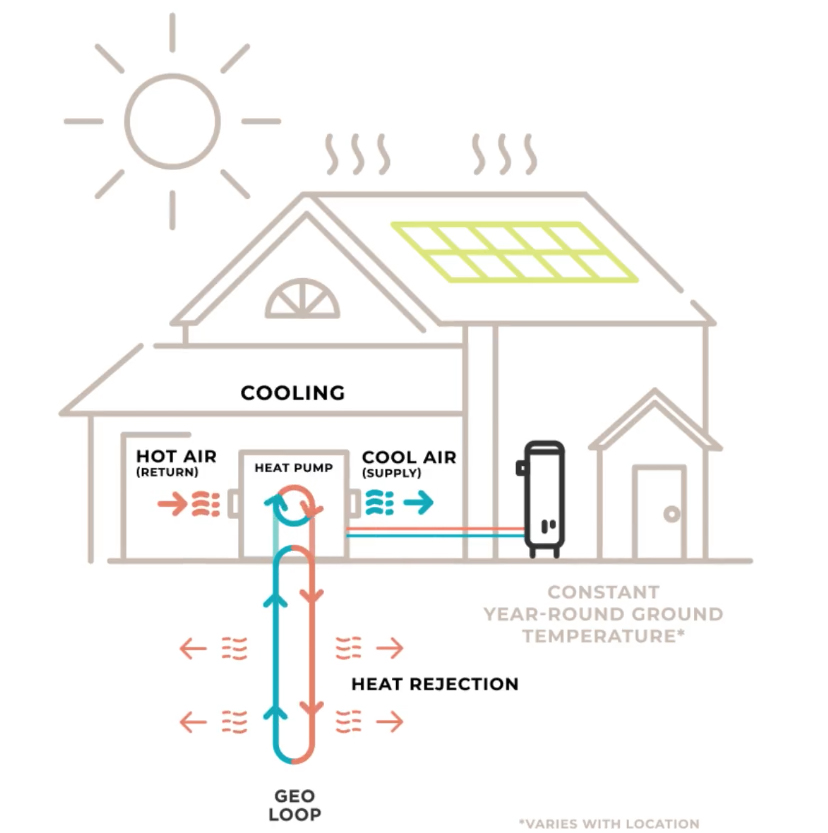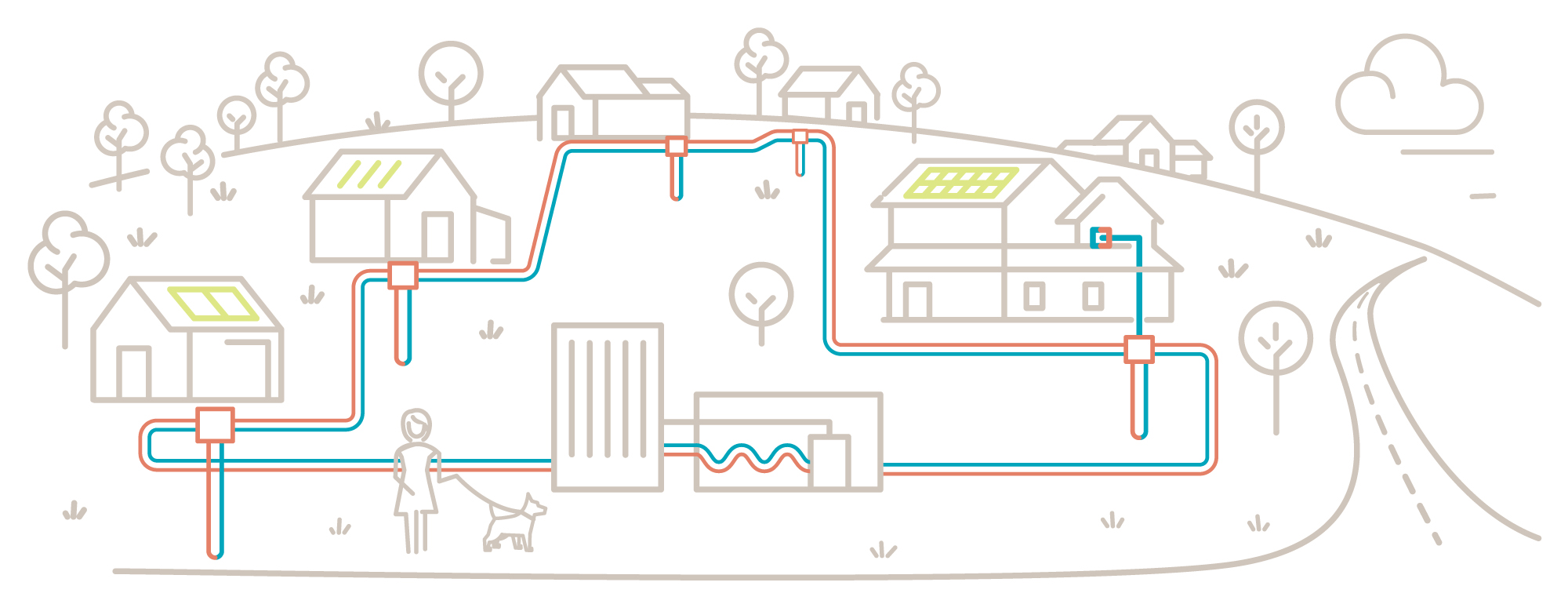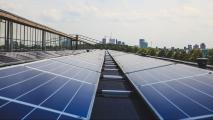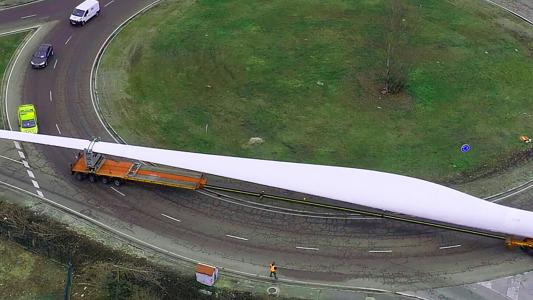A planned community in Austin, Texas, is harnessing the power of geothermal energy to slash homeowners’ energy costs and carbon emissions.
The challenge: Residential buildings account for about 22% of the U.S.’s energy consumption, and more than half of that goes toward heating and cooling systems.
These are typically powered by natural gas or electricity, which is usually generated by gas or another fossil fuel, causing a significant share of the nation’s carbon emissions.
Geothermal heat pumps take advantage of Earth’s consistent below-ground temperature to heat and cool homes sustainably.
Geothermal energy: While the temperature on Earth’s surface varies wildly with the weather, seasons, and location, that’s not the case below the surface. Dig about 10 feet down almost everywhere, and the temperature will be about 54 degrees Fahrenheit. Drill farther down, and it gets even warmer.
All 200 houses in Austin’s Whisper Valley development are equipped with geothermal heat pumps that take advantage of Earth’s consistent below-ground temperature to provide heat in the winter and cool air in the summer, eliminating the need for fossil fuel-powered systems.
How it works: Prior to building the homes, developer EcoSmart Solutions drilled holes into the ground and ran pipes down into them and back out. The homes themselves contain geothermal heat pumps, powered by solar-generated electricity, to circulate water through these pipes.
In the winter — when the temperature below ground is warmer than the surface temperature — the pumps pull up heat from underground and warm the air in the home
The opposite happens in the summer — heat from the warm air is sunk into the water and then pumped underground to cool it. The cooler water is then brought up to lower the temperature in the house.

The next level: While geothermal heat pumps are typically used for individual homes, all of the underground pipes in Whisper Valley are connected to a shared “GeoGrid.”
This system includes a pump house that manages the flow of water throughout the neighborhood using monitoring and control systems. There are also cooling towers to help offset extra heat in the hot Texan summers.
Because the homes all share this GeoGrid, residents don’t have to worry about being without air conditioning even if their personal system goes down — they can just tap into the grid. If a home needs more heating or cooling than its individual system can provide, it can get that from the GeoGrid, too.

Energy savings: In addition to the geothermal heat pumps, all of the homes in Whisper Valley have solar panels — the price of those is built into the closing cost of each house, according to David Currie, EcoSmart Solutions’ Community Relations Manager.
Greg Wolfson, EcoSmart Solutions’ CTO, told Fast Company that the two technologies have cut some Whisper Valley residents’ energy bills down to just $1 per month, though it’s not clear if that’s a consistent rate throughout the year or a rare occurrence.
At least some of the money residents save on their energy bills is offset by a $40 to $80 monthly service fee for the GeoGrid, though.
“To keep the GeoGrid running at top efficiency, a monthly geothermal service assessment covers all on-going operational costs, warranty, service and maintenance to the system,” reads the community’s FAQ document.
“Our water temperature coming into the homes was 60 degrees or above when the temperature outside was 9 degrees.”
Greg Wolfson
The big picture: Even if Whisper Valley residents are simply replacing a gas bill with a monthly service fee (and the cost of solar panels), their use of geothermal heat pumps and solar panels instead of fossil fuels is still a win for the environment.
The ability of the GeoGrid to keep people in Whisper Valley comfortable in the winter of 2021, when millions of Texans were without heat, just adds to the system’s allure.
“Our water temperature coming into the homes was 60 degrees or above when the temperature outside was 9 degrees,” Wolfson said. “So our heat pumps had no problem at all.”
We’d love to hear from you! If you have a comment about this article or if you have a tip for a future Freethink story, please email us at tips@freethink.com.






